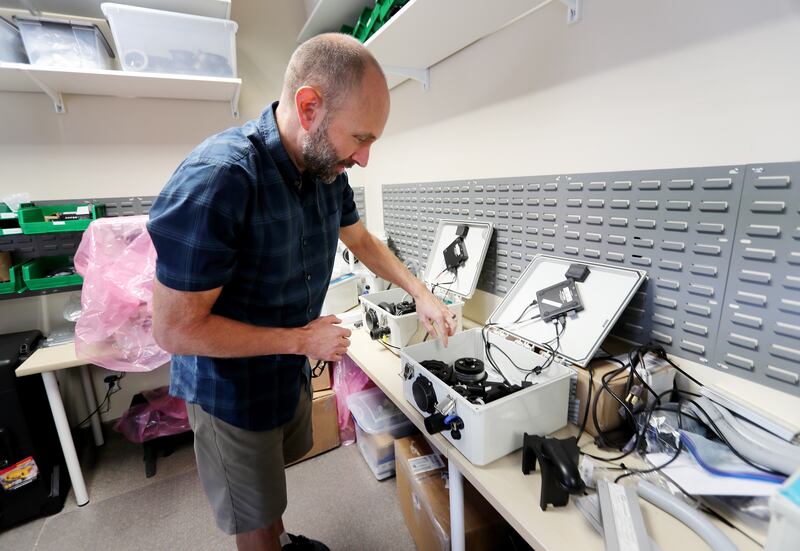PROVO — Those with seasonal allergies no longer have to be left in the dust, according to one Utah company.
While anyone can find hour-by-hour weather updates and forecasts with the swipe of a screen, data about pollen levels and content has traditionally been based on 24-hour averages from stations where pollen particles are counted manually, said Landon Bunderson, CEO of Utah County-based Pollen Sense.
Bunderson himself did some of that counting while studying airborne allergens at the University of Tulsa, he said.
“I almost went blind staring into a microscope counting pollen one by one,” Bunderson recalled. “I can’t even think of anything else that is still counted manually ... any other parameter in air quality has an automated sensor.”
According to the Asthma and Allergy Foundation of America, allergies are the sixth leading chronic condition in the U.S — and hay fever affects 6.1 million children and 20 million adults.
“For me, the inspiration was two things. I have seasonal allergies and there are no solutions out there, no real solutions for people who need good information,” Bunderson said.
“Historically, those 24-hour averages have done a huge disservice to the general allergy sufferers’ understanding of pollen. ... They report pollen by saying, ‘Today is going to be high, today is going to medium,’” he explained.
Pollen peaks at different times in the middle of the day and fluctuates throughout the day, Bunderson said, so it’s helpful for those with allergies to know when the levels will be the highest and when to avoid outside activity to prevent symptoms.
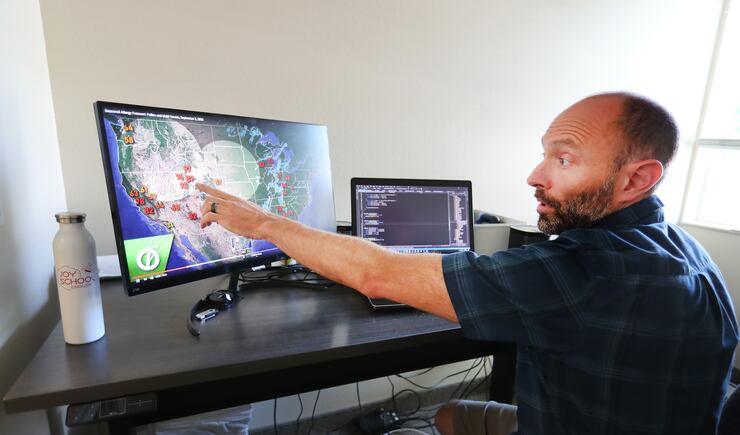
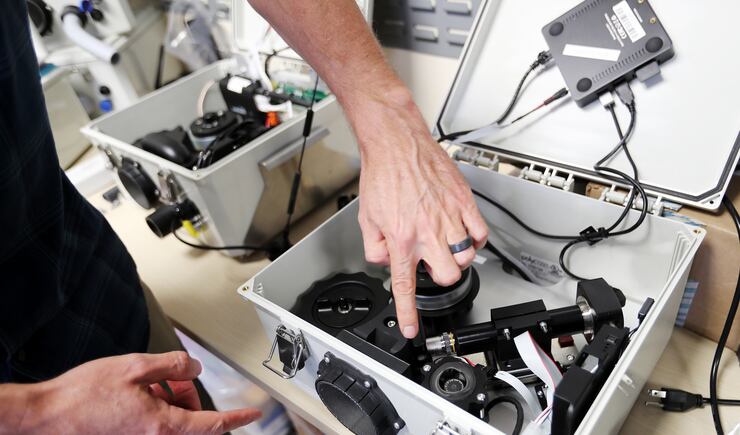
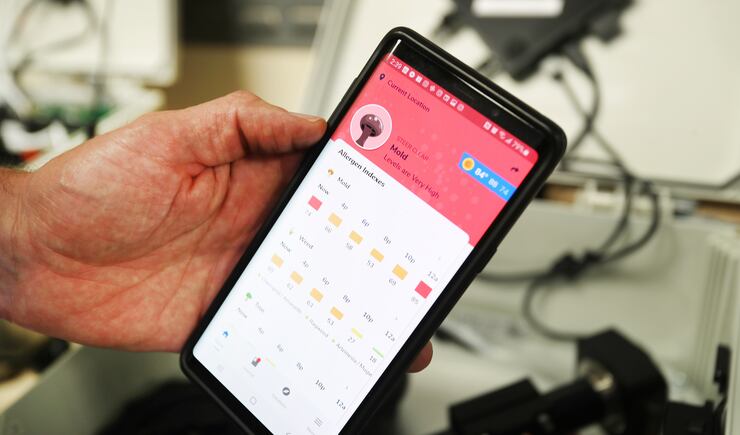
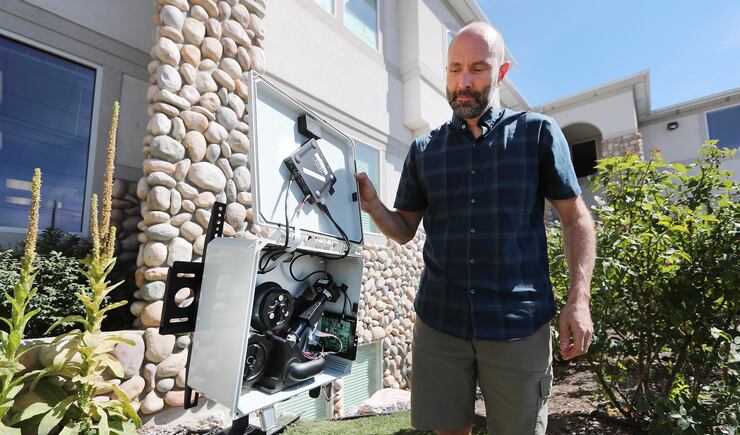
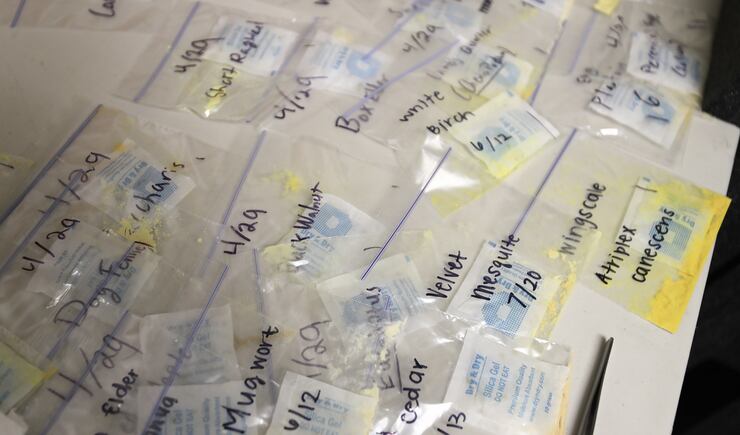
About a year ago, the company launched its app Pollen Wise, which offers indexes for several categories of allergens including mold, weeds, trees and grass. The app tells users how high the pollen levels are in their area, and the levels expected throughout the day.
“You can actually see current conditions right now,” Bunderson said.
In order to power the app, the company developed a sensor which draws in air and captures all of the particles on a sticky substance, Bunderson said. The sensor then uses an automated camera with a microscope apparatus that autofocuses and takes pictures of the particles. The machine continuously samples and counts pollen particles. The team had to develop complex algorithms to sample the air and get the focusing right, and they used machine-learning algorithms to differentiate between pollen particles, Bunderson said.
He says nothing similar to the hour-by-hour data Pollen Wise provides exists on the market, though experimental tools have been developed in Europe.
The company has placed a network of 90 sensors in the U.S. The app provides relevant data to those within 40 miles of a sensor, Bunderson said, and the company is working to build a large network of sensors throughout the country to provide more accurate data.
The most dense network of Pollen Wise sensors exists in Utah, where there is one in Sandy, one in Salt Lake City, one in Logan, three in Utah County and one in St. George, Bunderson said.
Manual counting, however, is still considered the “gold standard” for pollen counts, Bunderson said. The Pollen Wise team compares data from its sensors to that of manual counting stations daily. While data gathered by the sensors is “very comparable” to that of counting stations, the sensors are “extremely good” at detecting certain types of pollen and “just OK” at others, according to Bunderson.
“The device is growing up really fast. We’ve implemented three new versions to continuously improve it, so it’s getting better and better, but already it’s comparable with the manual stations,” Bunderson explained.
He said the team envisions the tool eventually eliminating the need for manual counting stations, as well as becoming a resource where allergy sufferers can find hourly data, talk about their allergies with others, and find information that as of now is dispersed throughout the internet.
While the app is free, Bunderson said the company plans to eventually implement a paid service that, using algorithms, will help users discover what they’re allergic to and which adjustments they need to make to reduce their symptoms, and offer an allergy coach service.
Bunderson said the response to the app has been “really positive” so far.
“We have people downloading the app like crazy just through word of mouth, and we’ll have these interesting things where there will be somebody in a city that will find out about it, and all of a sudden we have hundreds of downloads every day in one little city,” Bunderson said.
He said the company is hearing stories from app users who say they feel empowered by the information as “there’s a certain power in knowing what’s in the air, but having a sensor near you and having that information can arm you with what you need to make decisions about your day.”
For more information, visit pollensense.com.

